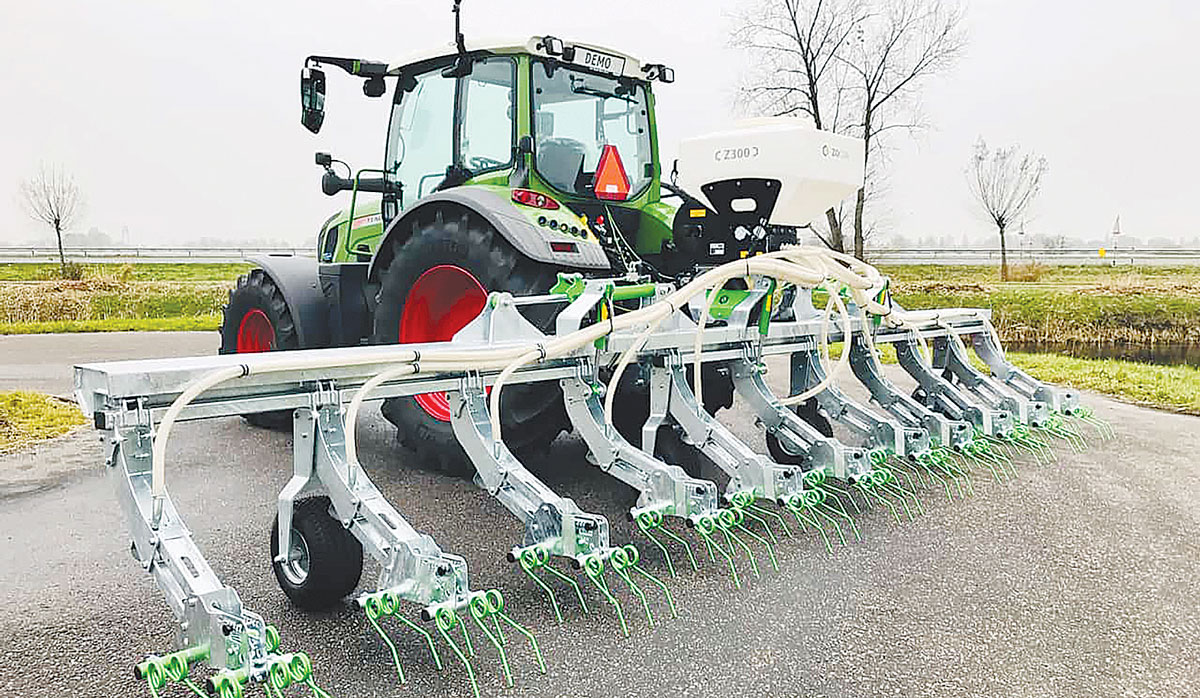Hitting heifer liveweight targets
Early December marks a key transition for many dairy farmers, as weaned replacement heifers head off-farm to grazing.
Given that New Zealand farmers are being expected to improve their environmental footprint, some trials in the UK around under-sowing in growing forage maize crops may have some benefits here too, particularly in the south.
On the other side of the world, forage maize is typically planted in March-April then harvested in late September through to November. As the season heads towards winter, there is a small window for establishing re-seeds, so in many cases the ground is left bare until the following spring. This means land is out of production, but also prone to harmful erosion and run-off.
Numerous trials have shown the benefits of under-sowing with grass, clover or other catch crops during the early days of the maize crop, leading to investment in specialised inter-row cultivators purposely designed for the job.
The Zocon Greenseeder is one such machine, with a format that sees an extended, high-clearance frame, carrying up to 12 cultivator elements at 50 or 75cm spacing, complemented by a seed bin and pneumatic seeding system.
Trials suggest that the ideal time for sowing the grass or catch crops is from one week after any post-emergence herbicide applications, typically with the new maize plants at the six or seven leaf stage, to prevent the primary crop becoming smothered by the under-sown plants.
Researchers suggest that the grass can utilise any residual nutrients left after the maize crop is harvested, while clover blends will help to fix nitrogen and raise protein levels.
In West Wales one 6.5ha trial allowed a farmer to gain 16 days of early grazing for 160 ewes, with the added benefit of reduced soil erosion on a sloping site. It was also noted that the under-sown grass made the ground more receptive to slurry application than bare maize land as it greatly reduced the risk of run-off and potential pollution of water courses.
Looking at the harvest end of the operation, often in “catchy” conditions late in the season, growers reported that the land being travelled on was much more stable, supporting in-field traffic better, but most importantly reducing the amount of mud being brought out onto the highway.
 |
|---|
|
The Zocon Greenseeder. |
Researchers suggest that the only negatives are the need to deliver a clean inter-row seedbed to plant the catch crop into, alongside the level of skill required in driving down the growing rows of maize, with the crop typically being around 18 to 30 inches high, so leaving little margin for error.
In the east of the UK, trials of under-sowing in maize crops is being supported by river and waterway authorities who can see potential benefits, while also finding favour with those farmers trying to adopt regenerative practices. The latter see benefits around enhancing soil structure and organic matter and reducing soil erosion, with some commenting on the increasing number of surface worm casts, which suggest the soil is in good health.
Jon Myhill, a farmer and agronomist for the Maize Growers Association, says the physical aspects of the process means that there is probably a two week window to get the catch crop sown, before the maize rows “close over” and passage through the crop becomes impracticable because of damage to the maize plants.
Myhill also suggests that the use of the system requires a change in mindset, as the reality is that there are little or no monetary benefits. Rather, it serves to improve soil health, alongside reduced run-off and pollution. He comments that with a typical cost of around $80/ha, the benefits of capturing nitrogen and increasing organic matter could make a substantial difference to the amount of inorganic fertiliser needing to be applied, with the bonus of some early spring grazing.
Additional tariffs introduced by the Chinese Government last month on beef imports should favour New Zealand farmers and exporters.
Primary sector leaders have praised the government and its officials for putting the Indian free trade deal together in just nine months.
Primary sector leaders have welcomed the announcement of a Free Trade Agreement (FTA) between India and New Zealand.
Dairy farmers are still in a good place despite volatile global milk prices.
Legal controls on the movement of fruits and vegetables are now in place in Auckland’s Mt Roskill suburb, says Biosecurity New Zealand Commissioner North Mike Inglis.
Arable growers worried that some weeds in their crops may have developed herbicide resistance can now get the suspected plants tested for free.
President Donald Trump’s decision to impose tariffs on imports into the US is doing good things for global trade, according…
Seen a giant cheese roll rolling along Southland’s roads?